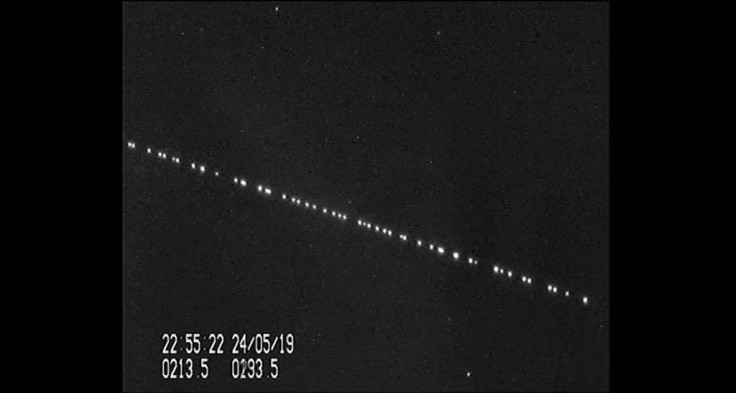Rare Unicorn Meteor Shower Ruined By Train Of SpaceX Starlink Satellites [Video]

Stargazers witnessed firsthand how a train of SpaceX’s Starlink satellites photobombed what should have been a stunning meteor shower last week. For experts including scientists from NASA, the issue with Starlink satellites could hinder the operations automated systems that detect cosmic objects such as meteors and asteroids.
Late last week, the Unicorn meteor shower, also known as Monocerotid, debuted in the skies over North and South America. It was predicted that the meteor shower from the constellation Monoceros or the Unicorn would produce hundreds of shooting stars during its peak, Science Alert reported.
The meteor shower was considered as a rare cosmic event because the last time it produced an outburst was in 1995. Unfortunately, the spectacular display was ruined by the sudden appearance of the Starlink satellites deployed by SpaceX.
The incident was captured by the Global Meteor Network’s (GMN) Farra Observatory in Italy. At the beginning of the short time-lapse clip, meteors can be seen streaking across the night sky. However, towards the end of the video, trains of Starlink satellites began to appear, obstructing the visibility of the meteors.
The observatory in Italy wasn’t the only facility that captured the Starlink satellites during the shower. Currently, the GMN has over 150 meteor-hunting cameras in different parts of the globe. However, about half of them were blocked by the space-based internet satellites from SpaceX.
After watching the video and seeing the images provided by GMN, Bill Cooke of NASA’s Meteoroid Environment Office expressed his concerns regarding the effect of the satellites on the capabilities of observatories automated monitoring systems.
“It was a real eye-opener,” he told Space Weather, “This kind of thing could force us to change how we write software to auto-detect meteors.”
Meteor researcher Denis Vida shared the same sentiment regarding the possible effects of SpaceX’s satellites on sky gazing. Vida noted that things might get worse in the future once SpaceX deploys a total of 42,000 Starlink units in low-Earth orbit.
“One has to be concerned how will our skies look like when hearing that there are plans to launch a total of 42,000 satellites,” the researcher stated in a GMN blog post. “This might completely deny us to do any optical meteor observations as soon as 2024.”
© Copyright IBTimes 2024. All rights reserved.





















